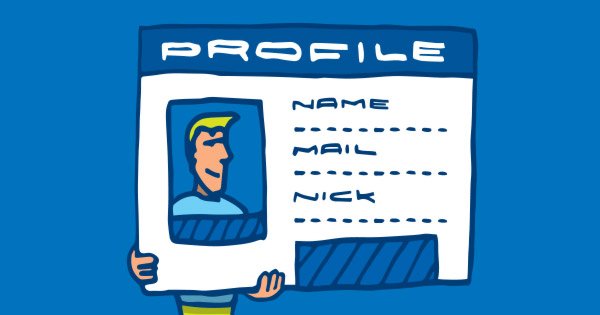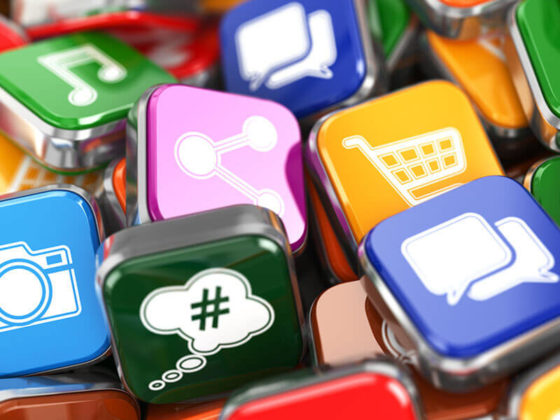Social media might seem like an odd channel for B2B strategies. Facebook, Twitter, and Instagram are more like playgrounds than platforms for formal business. But B2B has been radicalized with the advent of LinkedIn. LinkedIn is social networking for professionals who want to connect with others in their field for the purposes of finding employment, connecting with old colleagues, and generating leads. B2B lead generation using LinkedIn is a hot business tactic among its 400 million members because of the unique opportunity its platform provides.
Generating leads via LinkedIn (often called social selling) has yielded some incredible results. IBM boosted sales by 400% via LinkedIn as their primary tool for prospecting. In the social media lead competition, LinkedIn wins by a mile, covering over 80% of B2B social media leads and conversions. And with cold calling on its way out, social selling becomes the clear path forward for sales reps who want to succeed and meet their quotas.
How do you generate leads through social media? You establish yourself as a professional in your field through these tactical online steps.
Create an Optimized LinkedIn Profile That Accurately Reflects Your Professional Life

An optimized LinkedIn profile is a lot like a digital resume, but it is more nuanced than that. It should include an extensive summary of your professional career, skills, education, and charitable causes. People who visit your profile will assess your level of expertise and competence solely on how you present yourself online. It won’t be visible to just a few people—LinkedIn’s entire user base will have access to it.
Wow them by sprucing up your profile with these ingredients:
- A cover photo that reflects an element of your industry
- A professional-looking profile photo
- A headline that describes either your job title or your specialty, or both
- A summary of your experience from the beginning to your most recent work venture
- A list of your places of employment, with a breakdown of your responsibilities and the results you produced in each position
- A list of volunteer and charity work
- Causes you care about
- Portfolio examples in the form of images, publications, videos, and slideshows
- Skills
- Honors and Awards
- Education
You can also showcase written endorsements from colleagues at your current or past places of employment. These endorsements appear under the company you both worked for as it appears under your experience summary. These same colleagues can endorse you for particular skills, which show up as a numerical value next to whichever one they picked.
In your headline, summary, and experience descriptions, use keywords that are typical in your industry, especially those that align with hot trends it is experiencing. This will make you easier to find in search engines and boost your reputation as an expert.
Having a properly optimized LinkedIn profile results in more views, more requests to connect, and a higher likelihood of opening a conversation that leads to business.
Connect With People Who Can Be Turned Into Customers

Making connections is what LinkedIn is all about. You want to find likeminded people with whom you can easily establish common ground and a mutually beneficial relationship. LinkedIn’s search feature does the grunt work for you when you need to find these people.
The search function of LinkedIn has a distinct advantage over cold calling. It helps you find the right people faster, and it cuts away the red tape you would ordinarily have to wade through when seeking them out through traditional means.
Narrow down your search through the Advanced People Search by filling in the details of the type of people you want to find:
- Keywords
- Title
- Company
- School
- Location
- Industry
Chances are, you know someone who is connected with whom you want to talk to. Asking them to introduce you to that person is a reliable icebreaker that accelerates the process and makes them more likely to keep up a conversation with you.
When making connections on LinkedIn, don’t treat each new prospect as just another sales pitch. They want to feel respected and treated like real human beings. Show them you are interested in their professional lives like you would show interest in the life of a friend. Accomplish a similar effect by:
- Sending them a message thanking them for the add
- Endorsing them for a skill
- Commenting on and liking their LinkedIn status updates
These actions might sound like small gestures, but they plant future seeds that can grow into stronger, closer connections.
This is just the beginning of nurturing your connections on LinkedIn. There are multiple ways to do this. Another way is to…
Share and Engage With Content on Your LinkedIn Newsfeed

Your newsfeed is a nonstop train of activity. People are always posting new status updates, liking each other’s statuses, and leaving comments for one another. Each new status is an opportunity to engage with your connections and take the relationship further. It’s also the quickest way to show interest in their lives. Plus, it gives you the chance to spark longer, more in-depth discussions with them.
Responding to your connections’ content is only half the battle, though. As the owner of your own professional brand and a representative of your company’s brand, it is your responsibility to share content as well. A few ways of doing this are:
- Posting news and think pieces related to your industry to generate conversations with your colleagues and peers.
- Sharing the status updates of your company’s LinkedIn page.
- Sharing content your company creates, such as blog posts, images, and videos.
- Updating your status with the developments in your career, such as a new job or an exciting new project.
The collective result of these efforts is the portrayal of you as an active, interested member of your network and of your industry. Being prolific will only help you better persuade prospects to listen to what you have to say.
Join LinkedIn Groups and Participate in the Discussion

The activity you see on your newsfeed is only one part of everything happening on LinkedIn. Lots of discussion occurs in industry-specific groups. These discussions concern the biggest challenges, trends, and controversies of your industry, with lots of input from professionals at all levels—from entry-level employees to CEOs.
Groups are fertile ground for finding prospects, but you will want to handle it with tact. Be part of the discussion by:
- Adding you own advice and insight on topics
- Respond to the comments of other group members
- Start your own threads regarding topics you want to discuss
If you establish yourself as a valued member of the community, the leads will come to you. The people you want to connect with will send you an invitation to connect and get the ball rolling themselves.
Publish Content on LinkedIn Pulse

Pulse is LinkedIn’s official publishing platform for industry experts wishing to share their opinions and expertise in more long-handed forms. What distinguishes it from other forms of publishing is that it reaches all 400+ million members of LinkedIn, something other distribution channels can’t boast.
Pulse also allows publishers to curate content in a more targeted fashion. It divides content into topic and theme, narrowing your audience down to the people who matter—the people you are hoping will read your work and feel inspired to comment on it.
What kind of topic should you choose? Write about what you know best as it relates to your industry. It can be about a long-standing controversy, or a hot topic in one of the groups you are part of. Whatever it is, it is your chance to showcase your grasp on a subject—another point of persuasion in your favor and another reason for prospects to trust you.
LinkedIn’s analytics also let you track the success of your Pulse content. These statistics include:
- Page views for the last week, 15 days, 30 days, 6 months, and the year
- Reader demographics (job title, industry, location, traffic source)
- Likes, comments, and shares
Studying the analytics of your Pulse posts enables you to make smarter decisions in the future about topic choice and target audience. Comments from readers might inspire new content ideas as well.
Social media should not be viewed as a waste of time, but as a chance for others to see you as the professional you are. Generating leads is about building trust with prospects, and the only way to do that is by opening up about your professional accomplishments, ambitions, and opinions, and by staying an active voice in your network. This strategy elevates a conversation with a prospect from you trying to sell them something to you showing them how you can help make their lives better.
We are skilled in generating leads with social media like LinkedIn. If you work in B2B, we can help you harness this platform as a vital lead generation tool. Contact us today to find out how.






